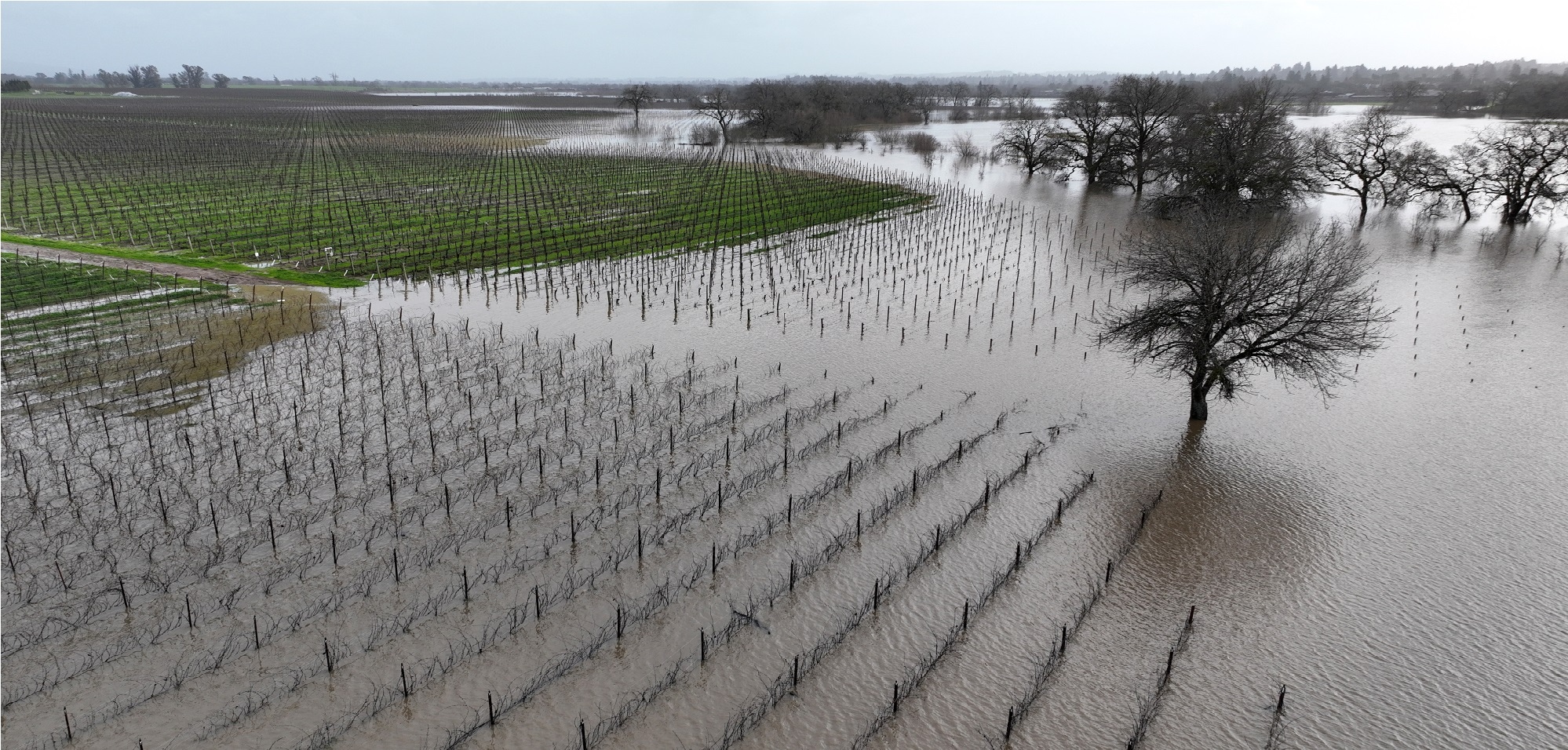Flood victims are encouraged to take advantage of available help
The registration deadline for all California designated counties is March 16

Nearly a month after devastating winter storms that caused damage, destruction, and killed 21 people, California state officials reminded those affected by flooding to take advantage of available resources to recover from disasters.
“It truly has been an incredible force of nature, but the state and its federal and local partners have stepped up in an incredible and coordinated way to ensure Californians have the resources they need before, during and after storms,” said Diana Crofts-Pelayo, spokeswoman for the Office of Emergency Services (Cal OES), during the video conference: “ A path to recovery. Building towards a safer world and a more resilient future ”, organized by Ethnic Media Services and California Black Media.
He recalled that Governor Newsom included 41 counties in the emergency declaration to assist with quick resources from the federal government.
“So far, FEMA (the Federal Emergency Management Agency) has approved 9 counties specifically for individualized financial support, but the state has also partnered with trusted community organizations through this recovery effort; and thus help survivors with the resources they need.”
He recommended Californians visit ListosCalifornia.org for natural disaster preparedness tips.
Robert Troy, deputy director for Cal OES interagency recovery coordination, said his job after winter storms is to gauge the impacts of disasters and bring whatever support can help local communities.
“There is a phrase in emergency management that says that all disasters begin and end locally. That is true but our mission is to make sure that local communities are not alone”.
To date, 7 disaster recovery centers have opened throughout the state, with another 7 to come. For more information you can visit the website: Cal OES recovery.
He said that every time they go out and repair a damaged road or facility after a disaster, they strongly encourage local communities to also invest in building more resiliently so they can better withstand future disasters. “For this we also help with funds.”
Brian Bui, FEMA Region 9 emergency management specialist based in Oakland, California, said that under the emergency declaration, there were 49 counties, but nine counties were placed under the major disaster category to give them individual assistance. including Calaveras, Merced, Monterey, Sacramento, San Joaquin, San Luis Obispo, San Mateo, Santa Barbara, and Santa Cruz.
“As we continue to assess the damage, there is the potential to add more counties to give them individual assistance. This includes support for housing rent, a temporary roof, help with repairs, paying for funerals and medical, dental, child care and other expenses.
He pointed out that the highest assistance per household for this fiscal year is $41,000. “These are expenses or losses not covered by insurance.”
And he stressed that to register with FEMA they must call 1-800-621 FEMA or 3362.
“They can also go in person to the state-local relief center or disaster recovery center.”
He mentioned that a survivor can also register via the Internet at the website: disasterassistance.gov or download the FEMA application on their mobile phone.
“The deadline to register for the aid in all designated counties is March 16.”
He stressed that the assistance is provided for up to 18 months, from the date of declaration of the emergency, or July 15, 2024.
“To be eligible for FEMA, the survivor must meet the following eligibility requirements: be a United States citizen or legal resident, must prove their identity, and that they occupied the primary residence at the time of the disaster.”
In the case of qualified aliens, he said a minor child who is a US citizen can become the occupant of the primary residence and qualify.
Remember that this help is for uninsured expenses and serious needs related to housing or other assistance.
Luis Santos Serrano, spokesman for the US Small Business Administration, said businesses of any size can borrow up to $2 million at 3.305% interest to repair or replace disaster-damaged property.
“It's what we call a physical disaster loan.”
He noted that small agribusinesses and nonprofit organizations can borrow for working capital if they need extra funds in cases where they had to close due to flooding.
“You can apply for up to $2 million in loans for working capital; or if they need to repair or replace machinery or equipment.”
Homeowners or renters can take out disaster loans for repair needs not covered by insurance.
“Homeowners can borrow up to $200,000 to repair or replace their primary residence; and they and their tenants can ask for up to $40,000 to replace their personal property inside their home, including vehicles.”
For more information, he asked to contact the telephone numbers: 1-800-659-2955 1-800-659-2955
Dayana Contreras of Catholic Charities of the Archdiocese of Fresno, said that from the first day they responded with food and clothing to the migrant camps and to those who arrived at their offices; and they also opened a disaster relief center.
“One of the biggest services they recently added is helping families fill out applications for CalFresh and Medicare.”
They also distributed blankets throughout the city and have a diaper delivery program; and have just been identified to serve in the disaster management program to support victims with a long-term recovery plan.
This news has been tken from authentic news syndicates and agencies and only the wordings has been changed keeping the menaing intact. We have not done personal research yet and do not guarantee the complete genuinity and request you to verify from other sources too.

